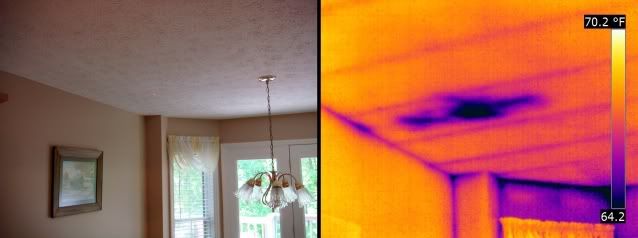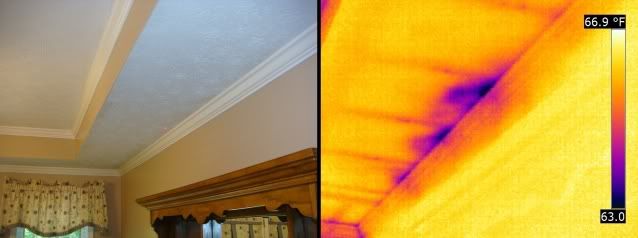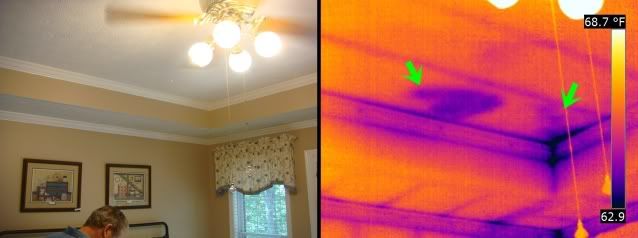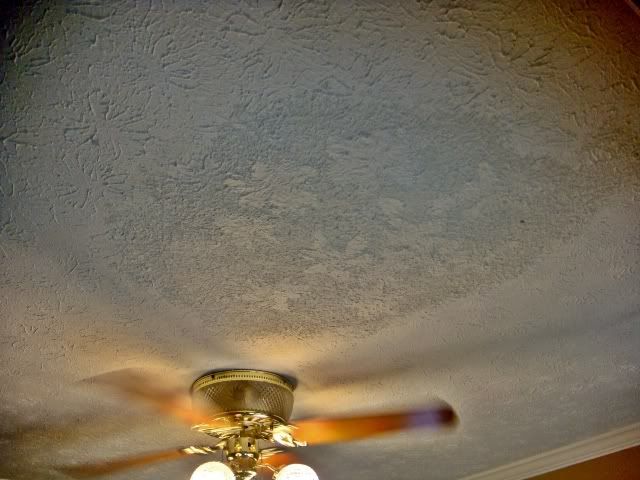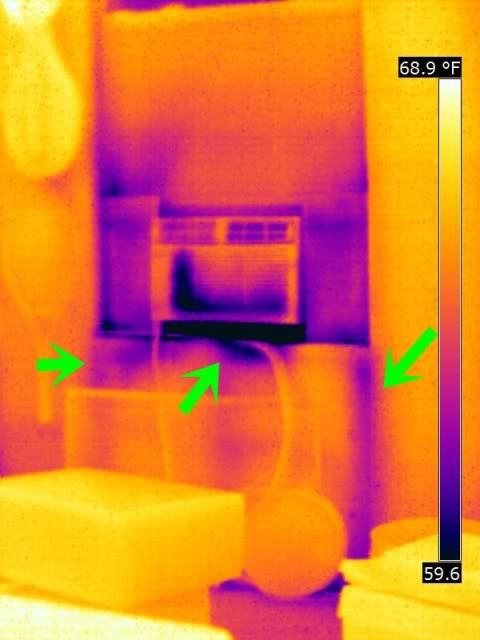Well said indeed.
Who is safer?
The guy that uses his IR camera to find moisture in the building that is not visible (even though the entry point of the moisture might be visible from the outside)?
or…
The guy who does not find the moisture, but goes by the SoP because that makes him feel safer.?
It’s not that expensive to start a separate IR inspection business. It does take time, training and experience though. You can’t just buy a camera and make big bucks. I bid on a 320 unit building today. I’ve done work for a major contractor that needs IR services for a 26 story building in Chicago. Can’t make that kind of money doing home inspections for months.
Sean -
I guess I have just had a 34 year run of good luck. I get complaints like everyone else does … “We’ve been in the house only 9 weeks and the sewer backed up last night, the furnace quit this morning, the water heater started leaking today, etc, etc - WHAT are you gonna do about it”?
BUT I’ve NEVER had ANYBODY call and tell me that ON MY INSPECTION, I missed a leaky roof, a leaking shower pan, a foundation moving into the neighbors yard OR any of the other crap I hear many of you talk about.
Why, I don’t know. I try and do a reasonably thorough inspection; I use a reasonably decent inspection agreement; and upfront I give my clients a little welcoming talk / I’m good but I’m not perfect; I’m never gonna find every defect in the house; many times its old, worn BUT working right up till the minute it decides to quit working AND I got no crystal ball to tell you when that will be; I’m not a repair contractor NOR am I the insurance company; If you want an insurance policy - Buy one; If theres a hole in the wall behind the china hutch AND the seller hasn’t told you its there … Guess What I’m not in the moving business and it will still be there when you move in. Anybody got any questions - If not lets get inspecting".
I’m empathetic BUT not sympathetic. I let my clients KNOW in advance theres no free lunch. I’ll be polite but I don’t baby them. IF its not doing something I can visually see at the inspection / There’s no big Red “S” on my underwear and I can’t see through walls AND I would not tolerate some buttercup trying to tell me I MISSED something in a concealed location.
Sorry Just Me
It would be nice to see some of these pictures of the area without the IR picture showing the condition so we can look at the area more closely to see if there is any suggestive evidence.
Nice shots David
It seems to me like the majority of inspectors that are not wanting to use thermal imaging are those that have been around for a very long time and have gotten by without it for a very long time.
When your really good at what you do and you’ve seen it all and found things that many would have missed than it probably is hard to accept changing your methods. Why would you change something when it’s worked for you for so many years? Why? Because think of even how much better of an inspector you would be with all the years of experience PLUS the newest and best inspection technology being used!
Any inspector who isn’t using Infrared technology is simply holding their own selves back. I get AT-LEAST one extra inspection a week for the sole reason of the client wanting Infrared technology.
Many old school dentist were hesitant on using X-ray machines because they already had a successful practice with many satisfied clients. The younger dentists who adopted the technology quickly became more in-demand than the old-school more experienced dentists. The old school dentists either adopted the technology or retired as x-rays became an industry standard. The same will hold true for home inspectors.
Camera prices are dropping and the public is quickly catching on to the benefits of infrared. Technology is raising the bar for everyone in every profession. Years of inspection experience is no longer going to be adequate. We’re going to need the years of inspection experience combined with years of inspection technology experience.
Within 10 years, EVERY reputable inspector will be using infrared and many will be using ultra-sound.
Some of the older master inspectors are going to have to read the book Who Moved My Cheese
I did not have to read who moved my cheese I saw the hand writing on the wall
Dave, looks like a leak to me.
Dave, whats up with the IR and Digital alignment? Do you use a separate digital or the one in the IR camera? Guess I know the answer to that, it depends on if you are using your BX or your T series. When using the T series do you use the IR camera’s digital?
JJ
Brandon -
Many of us older guys are not afraid of Technology but we know when we don’t have to use a 10 lb sledge hammer to kill a fly.
Jason: Yes I do. It works well, even in low light. Auto changes between normal and wide angle when I change lenses.
I like my BX320 for Home Inspections (that is what it was made for #1).
Second, it is easier to focus and quicker to shoot. Initializes faster.
I generally am just scanning the place, not taking that many pics.
Big Thermal jobs, I can’t live without all the bells and whistles on the T400.
Too hard to keep tract of everything otherwise.
I bring both to work every day and use the one that fits best.
So which one of you “old guys” are going to comment on my last pic?
Is it a leak, or what?
Are we going to call in a roofer to “evaluate” the roof or does someone have a better idea?
I will tell you this, none of the thermals tested out high in moisture meter testing, both contact and ultrasound.
So what are we going to do?

Since the water stain is obvious…
does IR do anything additional?
Pictures are cool
but bottom line fact remains…
[FONT=Helvetica][size=2]1) Ceiling
- Water damage and staining present on the ceiling in the area of -----------------
- Recommend removal of water damaged materials while checking for hidden damage.
- Recommend replacement and finishing of the wall / ceiling area after verification that water intrusion sources have been identified and repaired.
[/size][/FONT]
Look at the IR images genius, the “obvious” water stain is nowhere near the actual wet area.
I am not really old just kinda old but what I would do is go into the attic and see first hand what is above that area;-)![]() providing there was a attic:p:p
providing there was a attic:p:p
You asked for it! Very good! 
Partly finished attic with window A/C…
No signs or measurements of moisture here either…
Wuz something open in the wall allowing cold air to fall as we all know it duz:D
I rest my case… :roll:
This is where a contractor stepped through the ceiling when working…
Nothing to do with moisture. :shock:
But I’m sure you would have done something different to determine this, like tear up the attic flooring, “just to see what was under there”…
BTW: This Digital Picture was manipulated. It was not as visually obvious as it looks.
